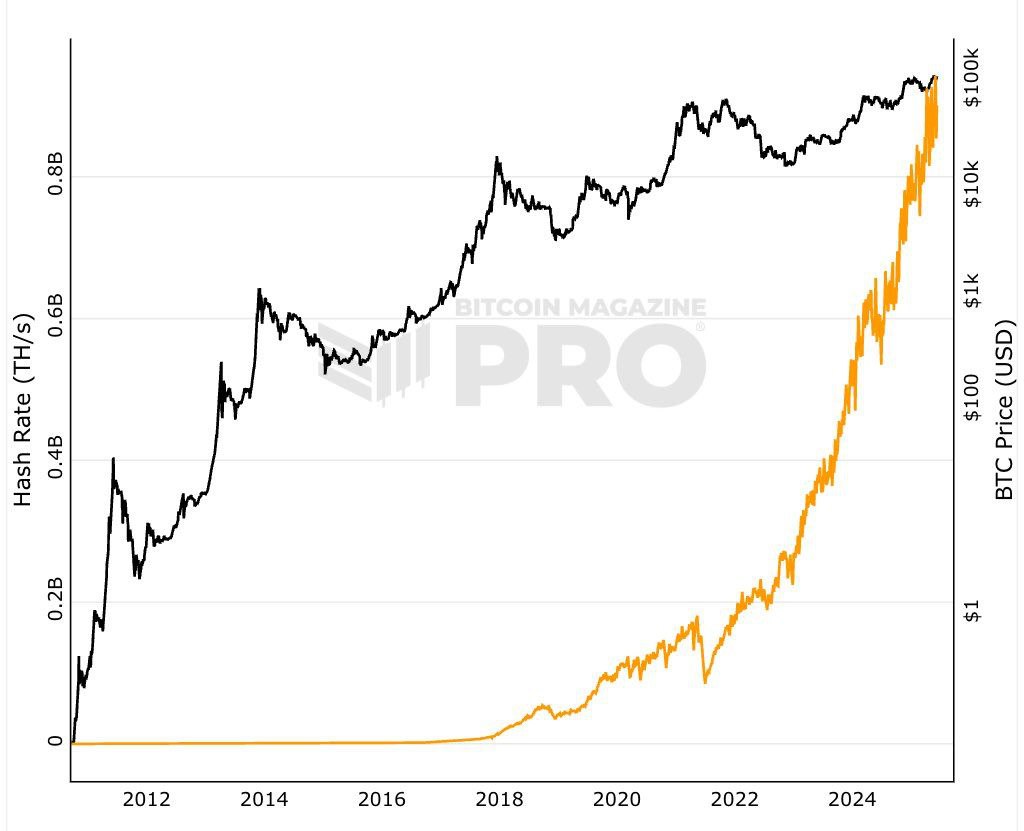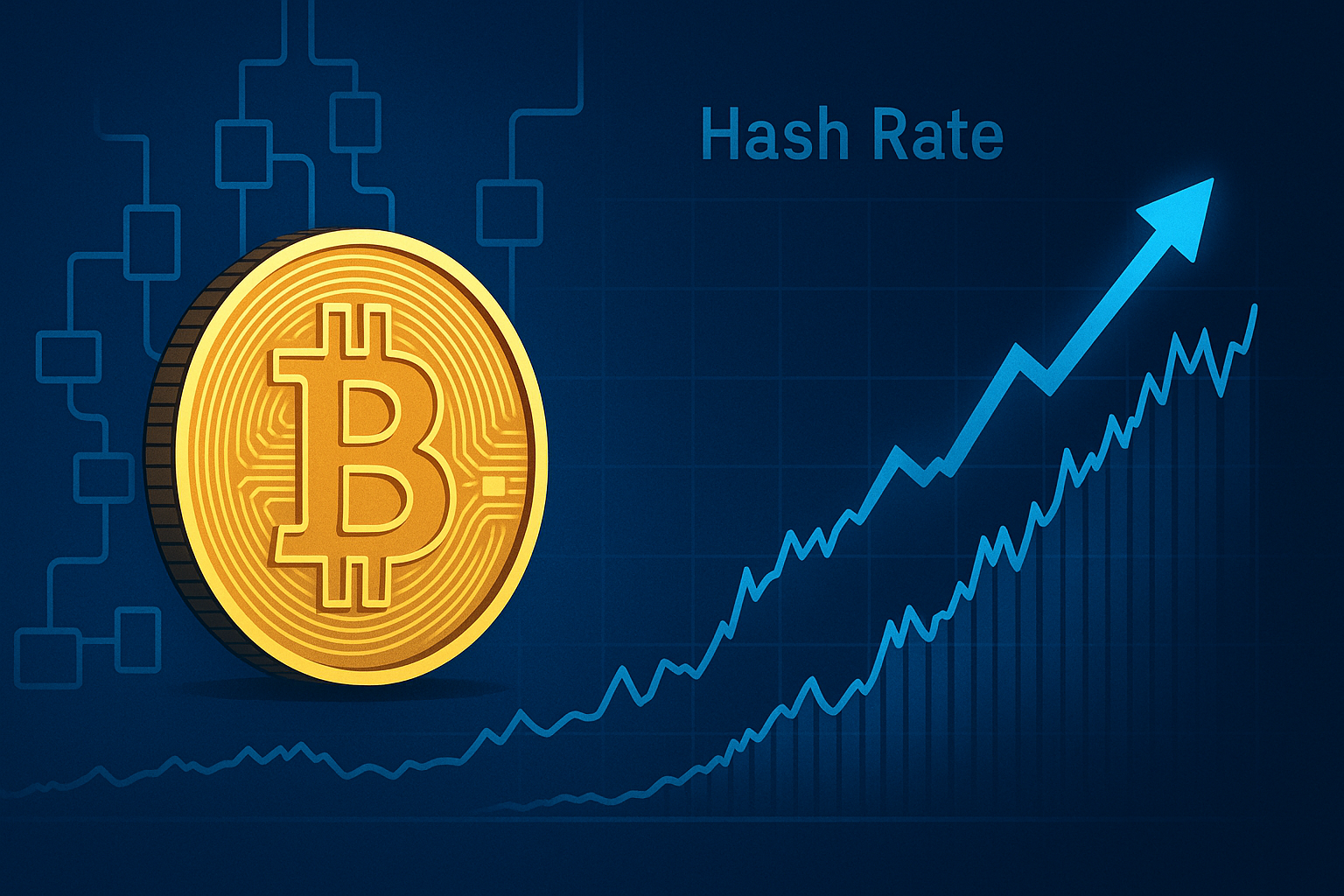Bitcoin has just hit a historic milestone. Its network hash rate has soared to a new record, crossing the one zettahash mark for the first time.
That means the Bitcoin blockchain is now processing over 920 quintillion calculations per second the highest level of computing power the network has ever recorded.
What’s fueling the growth
Several factors are behind this surge. After the recent halving, miners have doubled down on efficiency, deploying next-generation machines with higher output and lower energy waste. Large mining farms in the US and Central Asia have been expanding aggressively.
Even as mining rewards were cut in half, competition among miners continued to grow. This pushed the hash rate up nearly 40 percent since the start of the year.
A stronger, more secure network
The hash rate is often considered a proxy for the security of the Bitcoin network. The higher it goes, the harder it becomes to manipulate the blockchain or conduct a 51 percent attack.
Alongside this rise, the mining difficulty has also adjusted to match the new computational levels. This ensures that block production stays stable, even as the network becomes more powerful.
Miner revenue under pressure
While the network is stronger, mining profitability is facing pressure. With rising difficulty and a fixed block reward, the earnings per exahash are falling.
Recent estimates show miner revenue per exahash dropping to around 42 dollars one of the lowest levels in Bitcoin’s history. This may force less efficient operators to consolidate, shut down, or pivot to alternative income sources like transaction fees or liquid staking.
As Bitcoin’s infrastructure becomes more robust, it lays the groundwork for greater institutional confidence and long-term adoption. But it also intensifies the game for miners, where only the most prepared will thrive.
For more insights on how core infrastructure impacts the crypto landscape, follow our analysis at XSTPNews.








